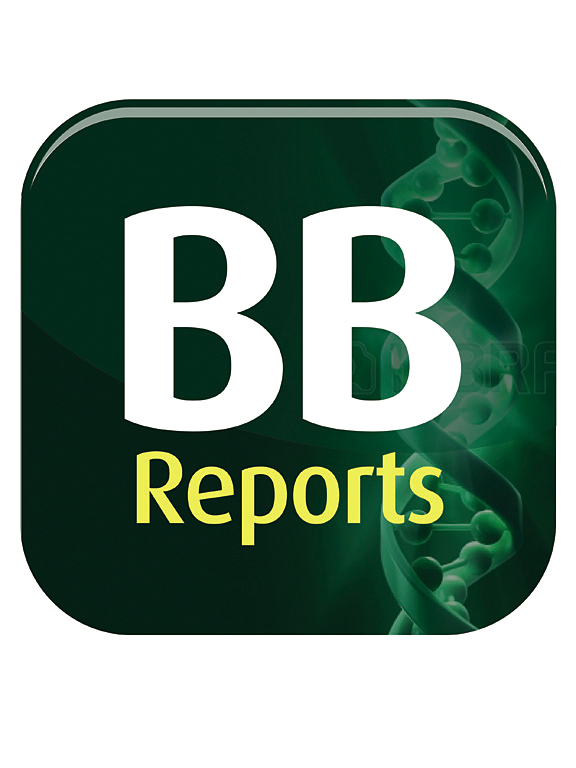在器官芯片微生理系统中培养的猪肠道类器官
IF 2.3
Q3 BIOCHEMISTRY & MOLECULAR BIOLOGY
引用次数: 0
摘要
临床前研究是药物开发的重要组成部分,提高体外研究的预测价值是必不可少的。器官芯片体外模型是追求提高体内组织复杂性繁殖的最新进展。在此,我们报道了猪肠道细胞在微生理系统中的微流体动力学和蠕动样菌株芯片上的发育和表征。将肠上皮细胞与人肠道微血管内皮细胞在多孔膜上共培养12天。这些培养形成绒毛状结构,并建立了一个充满f -肌动蛋白和紧密连接的紧密屏障。上皮细胞的有界区处于活跃增殖阶段,使人联想到肠隐窝。肠上皮细胞的生长以肠细胞、杯状细胞和肠内分泌细胞为主。这些培养物中存在显著的药物转运体和CYP450代谢活性。当细胞旁通透性较低时,类器官芯片保持屏障功能。相比之下,渗透性增强剂癸酸钠(C10)使分子量标记化合物的表观渗透性提高了2- 3倍,并且在去除C10后,屏障被显示恢复。猪肠道芯片是一种新的体外模型,在药物代谢、药物转运体和安全性等药物检测方面具有潜在的应用前景。本文章由计算机程序翻译,如有差异,请以英文原文为准。
Porcine intestinal organoids cultured in an organ-on-a-chip microphysiological system
Preclinical studies are a vital component of pharmaceutical development and improvements in the predictive value of in vitro studies are essential. Organ-on-a-chip in vitro models are a recent advancement in the pursuit of improved reproduction of in vivo tissue complexity. Here, we report the development and characterization of porcine intestinal cells from organoids on chips with microfluid dynamics and peristaltic-like strain in a microphysiological system. Intestinal epithelial cells were grown on a porous membrane as a co-culture with human intestinal microvascular endothelial cells for up to 12 days. These cultures formed villi-like structures and established a tight barrier replete with F-actin and tight junctions. A demarcated region of the epithelial cells was in an actively proliferative stage, reminiscent of intestinal crypts. The intestinal epithelial cell growth was characterized for the presence of enterocytes, goblet cells and enteroendocrine cells. Notable drug transporters and CYP450 metabolic activity were present in these cultures. The organoid chip maintained barrier function as the paracellular permeability was low. In contrast, the permeability enhancer, sodium caprate (C10), increased the apparent permeability of molecular weight marker compounds by 2- to 3-fold, and upon removal of C10, the barrier was shown to be recovered. The porcine intestinal chip represents a new in vitro model with potential application in multiple aspects of pharmaceutical testing including drug metabolism, drug transporters and safety.
求助全文
通过发布文献求助,成功后即可免费获取论文全文。
去求助
来源期刊

Biochemistry and Biophysics Reports
Biochemistry, Genetics and Molecular Biology-Biophysics
CiteScore
4.60
自引率
0.00%
发文量
191
审稿时长
59 days
期刊介绍:
Open access, online only, peer-reviewed international journal in the Life Sciences, established in 2014 Biochemistry and Biophysics Reports (BB Reports) publishes original research in all aspects of Biochemistry, Biophysics and related areas like Molecular and Cell Biology. BB Reports welcomes solid though more preliminary, descriptive and small scale results if they have the potential to stimulate and/or contribute to future research, leading to new insights or hypothesis. Primary criteria for acceptance is that the work is original, scientifically and technically sound and provides valuable knowledge to life sciences research. We strongly believe all results deserve to be published and documented for the advancement of science. BB Reports specifically appreciates receiving reports on: Negative results, Replication studies, Reanalysis of previous datasets.
 求助内容:
求助内容: 应助结果提醒方式:
应助结果提醒方式:


